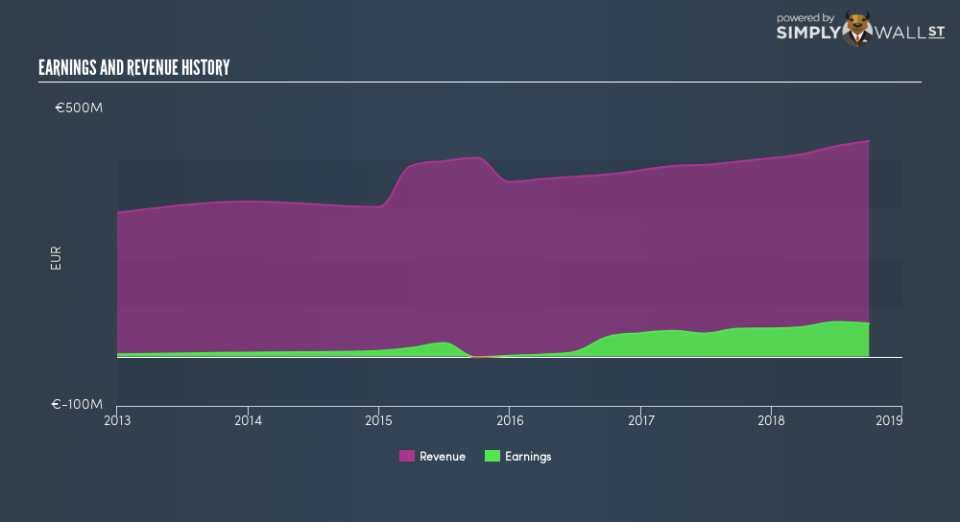What Kind Of Share Price Volatility Should You Expect For Cerved Group S.p.A. (BIT:CERV)?

Want to participate in a short research study? Help shape the future of investing tools and you could win a $250 gift card!
If you own shares in Cerved Group S.p.A. (BIT:CERV) then it’s worth thinking about how it contributes to the volatility of your portfolio, overall. In finance, Beta is a measure of volatility. Volatility is considered to be a measure of risk in modern finance theory. Investors may think of volatility as falling into two main categories. The first type is company specific volatility. Investors use diversification across uncorrelated stocks to reduce this kind of price volatility across the portfolio. The second type is the broader market volatility, which you cannot diversify away, since it arises from macroeconomic factors which directly affects all the stocks on the market.
Some stocks see their prices move in concert with the market. Others tend towards stronger, gentler or unrelated price movements. Beta can be a useful tool to understand how much a stock is influenced by market risk (volatility). However, Warren Buffett said ‘volatility is far from synonymous with risk’ in his 2014 letter to investors. So, while useful, beta is not the only metric to consider. To use beta as an investor, you must first understand that the overall market has a beta of one. A stock with a beta below one is either less volatile than the market, or more volatile but not corellated with the overall market. In comparison a stock with a beta of over one tends to be move in a similar direction to the market in the long term, but with greater changes in price.
See our latest analysis for Cerved Group
What does CERV’s beta value mean to investors?
Cerved Group has a five-year beta of 0.98. This is reasonably close to the market beta of 1, so the stock has in the past displayed similar levels of volatility to the overall market. If the future looks like the past, we could therefore consider it likely that the stock price will experience share price volatility that is roughly similar to the overall market. Beta is worth considering, but it’s also important to consider whether Cerved Group is growing earnings and revenue. You can take a look for yourself, below.
How does CERV’s size impact its beta?
Cerved Group is a small cap stock with a market capitalisation of €1.5b. Most companies this size are actively traded. It takes less capital to move the share price of small companies, and they are also more impacted by company specific events, so it’s a bit of a surprise that the beta is so close to the overall market.
What this means for you:
It is probable that there is a link between the share price of Cerved Group and the broader market, since it has a beta value quite close to one. However, long term investors are generally well served by looking past market volatility and focussing on the underlying development of the business. If that’s your game, metrics such as revenue, earnings and cash flow will be more useful. In order to fully understand whether CERV is a good investment for you, we also need to consider important company-specific fundamentals such as Cerved Group’s financial health and performance track record. I highly recommend you dive deeper by considering the following:
Future Outlook: What are well-informed industry analysts predicting for CERV’s future growth? Take a look at our free research report of analyst consensus for CERV’s outlook.
Past Track Record: Has CERV been consistently performing well irrespective of the ups and downs in the market? Go into more detail in the past performance analysis and take a look at the free visual representations of CERV’s historicals for more clarity.
Other Interesting Stocks: It’s worth checking to see how CERV measures up against other companies on valuation. You could start with this free list of prospective options.
To help readers see past the short term volatility of the financial market, we aim to bring you a long-term focused research analysis purely driven by fundamental data. Note that our analysis does not factor in the latest price-sensitive company announcements.
The author is an independent contributor and at the time of publication had no position in the stocks mentioned. For errors that warrant correction please contact the editor at editorial-team@simplywallst.com.

